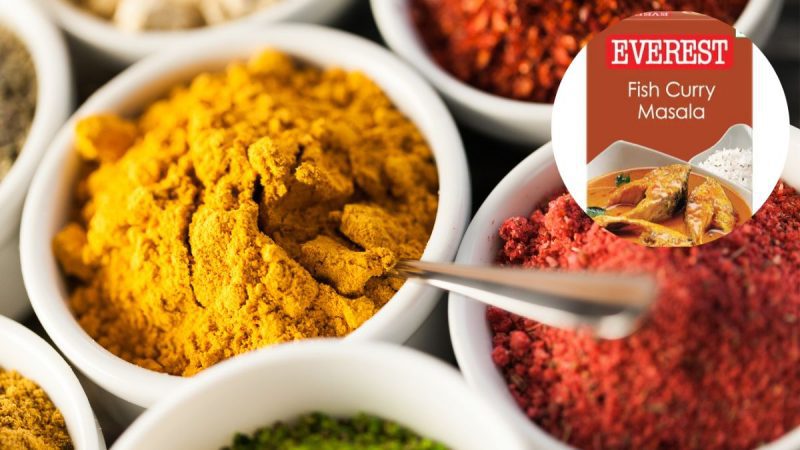Food security stands as a paramount concern in the recall of spiced masala. India’s “Everest fish curry masala” is being recalled by the Singapore Food Agency (SFA) because it contains ethylene oxide. This pesticide is not permitted for use in food, over allowable levels.
What’s The Reason Behind?
India’s “Everest fish curry masala” is recalled by the Singapore Food Agency (SFA) because it contains ethylene oxide. This pesticide is not permitted for use in food, above allowable levels. According to a report by The Times of India (TOI), people are recommended not to ingest the product. SFA has ordered the importer, Sp Muthiah & Sons, to recall the impacted products. According to the SFA, although ethylene oxide can be used to sterilise spices, it is classified as a pesticide and has not been approved for use in food.
Established more than 57 years ago by the late Vadilal Bhai Shah, the company is the biggest manufacturer of pure and mixed spices in India, with operations in more than 80 nations worldwide. This action comes after a similar warning from the Hong Kong-based Centre for Food Safety (CFS), which discovered ethylene oxide in several spice items, including names like MDH and Everest. The Hong Kong food regulator discovered that Everest Fish Curry Masala and three MDH products—Madras Curry Powder (a spice blend for Madras Curry), Sambhar Masala Mixed Masala Powder, and Curry Powder Mixed Masala Powder—contain the Group-1 carcinogen ethylene oxide.
Also read: Study Says This Spice Used By Indians Since 4,000 Years Is Effective In Curing Indigestion
The Intersection Of Taste & Food Security
India holds a dominant position in the production, consumption, and export of spices. The significance of spice consumption highlights the need to maintain quality standards in the manufacture of spices to comply with international food regulations.
To minimise microbiological contamination, ethylene oxide is typically employed as a pesticide during the fumigation of agricultural produce. However, using it in food goods is outright forbidden. The food agency declared that eating food with low ethylene oxide levels does not provide any immediate risks. It did note, though, that prolonged exposure to these substances can have negative health effects.
Furthermore, education and awareness are essential components of any strategy aimed at enhancing food security.
So, what do you think of this decision?
Cover image credits: Canva







